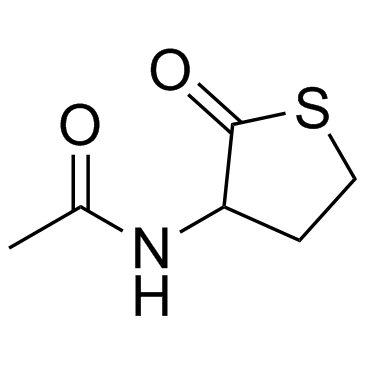Macrophages and antioxidant status in the NOD mouse pancreas.
G Papaccio, B De Luca, F A Pisanti
Index: J. Cell. Biochem. 71(4) , 479-90, (1998)
Full Text: HTML
Abstract
This study showed that citiolone (CIT), a free radical scavenger, significantly increased superoxide dismutase (P < 0.001 vs. untreated NOD, NMMA-treated, and silica-treated animals), catalase (P < 0.01 vs. untreated NOD), and glutathione peroxidase (P < 0.001 vs. untreated NOD and C57BL6/J) values. Silica treatment was capable of counteracting the plasma antioxidant capacity (TRAP) decrease observed in untreated NOD mice, although it did not block the blood glucose rise and insulitis progression in type 1 diabetes significantly. Conversely, early silica administration was able to deplete macrophages (as demonstrated by immunocytochemistry) and to block the rise in blood glucose levels and insulitis progression significantly. Silica-treated animals in this study showed the highest TRAP levels, demonstrating that depletion of macrophages also was able to improve the antioxidant status. This study suggested that macrophages are essential for type 1 diabetes development and showed that they also are involved when the antioxidant status is affected. The reported findings are significant in view of previous studies indicating that oxygen and/or nitrogen free radicals contribute to the islet beta-cell destruction in type 1 diabetes animal models.
Related Compounds
| Structure | Name/CAS No. | Molecular Formula | Articles |
|---|---|---|---|
 |
Citiolone
CAS:1195-16-0 |
C6H9NO2S |
|
Interleukin-1 beta increases the activity of superoxide dism...
1992-05-01 [Endocrinology 130(5) , 2851-7, (1992)] |
|
Inability of thiol compounds to restore CNS arylsulfatases i...
1991-07-01 [Pharmacol. Toxicol. 69(1) , 71-4, (1991)] |
|
Recurrent fixed drug eruption caused by citiolone.
1997-01-01 [J. Investig. Allergol. Clin. Immunol. 7(3) , 193-4, (1997)] |
|
Differential effects of methylmercury, thiols, and vitamins ...
1992-07-01 [Bull. Environ. Contam. Toxicol. 49(1) , 71-7, (1992)] |
|
Fixed drug eruption due to citiolone.
1995-11-01 [Contact Dermatitis 33(5) , 352, (1995)] |